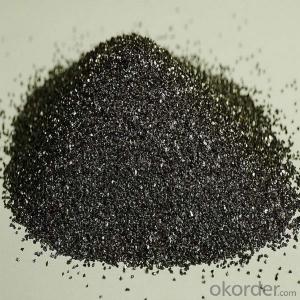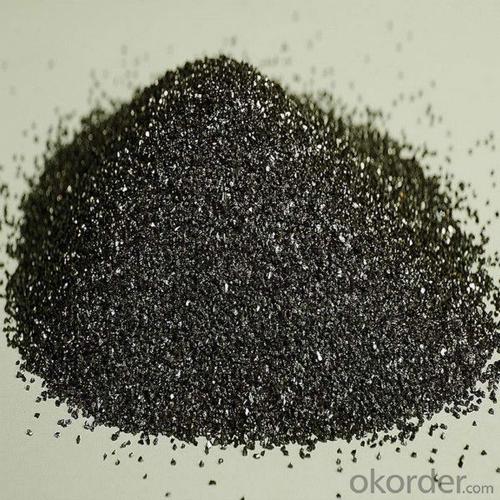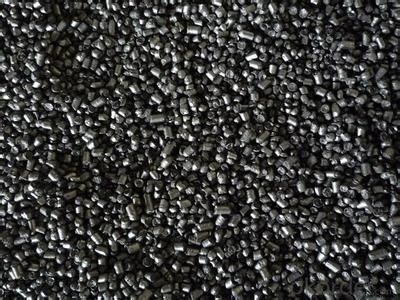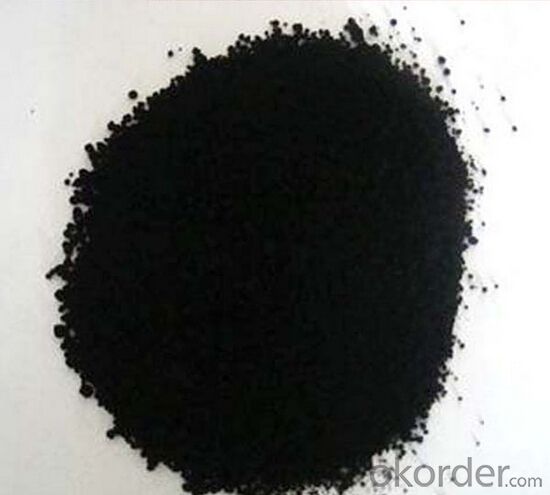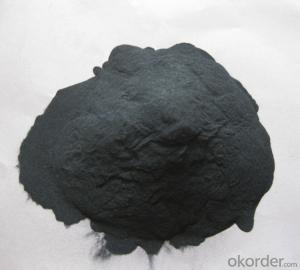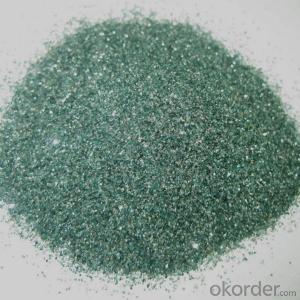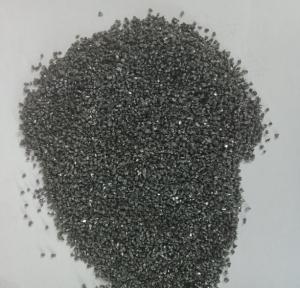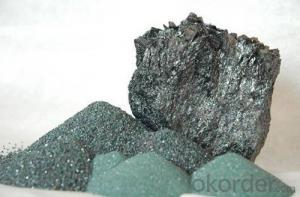Black Silicon Carbide Grit industry powder
- Loading Port:
- Qingdao
- Payment Terms:
- TT OR LC
- Min Order Qty:
- 10 m.t
- Supply Capability:
- 500000 m.t/month
OKorder Service Pledge
OKorder Financial Service
You Might Also Like
Specifications of Black Silicon Carbide:
Black silicon carbide grit F 24-240, sic 98.5%min, F.C 0.2%max, Fe2O3 0.3%max. Packing:25kg bags be packed into 1mt big bags.
- Description:
Black silicon carbide is produced at high temperature in an electric resistance type furnace with quarts sand and petroleum coke as its main raw materials. Its hardness is between fused alumina and synthetic diamond. Mechanical intensity of it is higher than fused alumina. It is sharp and has electrical and heat conductivity in some degree.
- Application:
♦As the abrasive: used for abrasive, such as grinding wheels, whetstone, grinding
wheel, sand tiles etc.
♦As the metallurgical deoxidizer and high temperature material.
Four main application areas of SiC: functional ceramics, advanced refractory,
abrasives and metallurgical materials.
♦High purity single crystal, used to manufacture semiconductors, manufacture of
silicon carbide fibers.
♦Silicon carbide is very hard, with excellent thermal conductivity, as a semiconductor
and high temperature resistant to oxidation.
- Specification:
Grits: F12-90, F100-240.
SIZE | SIC | F.C | Fe2O3 |
F24-90 | 98.5%min | 0.20%max | 0.30%max |
F100-150 | 98.0%min | 0.25%max | 0.30%max |
F180-240 | 98.0%min | 0.30%max | 0.30%max |
SIZE | BULK DENSITY | HIGH BULK DENSITY |
F16-24 | 1.42-1.50 | ≥1.50 |
F30-40 | 1.42-1.50 | ≥1.50 |
F46-54 | 1.43-1.51 | ≥1.51 |
F60-70 | 1.40-1.48 | ≥1.48 |
F80 | 1.38-1.46 | ≥1.46 |
F90 | 1.37-1.45 | ≥1.45 |
F100 | 1.36-1.45 | ≥1.45 |
F120 | 1.34-1.43 | ≥1.43 |
F150 | 1.32-1.41 | ≥1.41 |
F180 | 1.31-1.40 | ≥1.40 |
F220 | 1.31-1.40 | ≥1.40 |
F240 | 1.31-1.39 | ≥1.39 |
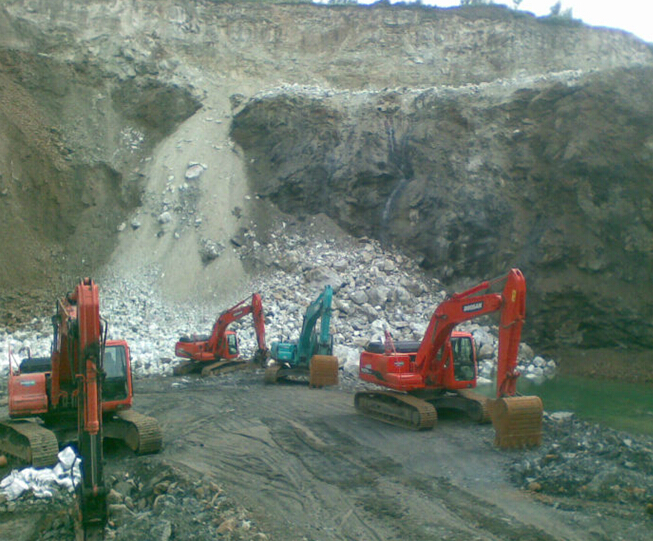
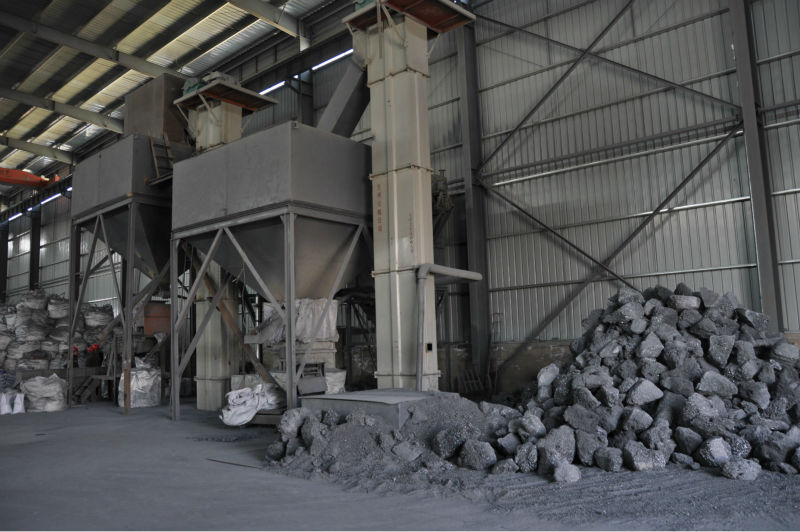
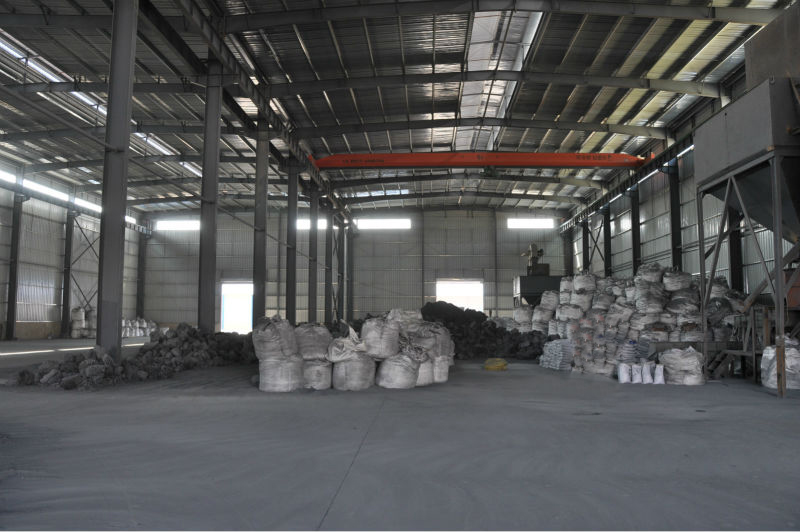
- Q: What are the impacts of carbon emissions on wildlife?
- Carbon emissions have a significant impact on wildlife as it contributes to climate change, leading to habitat loss, changes in migration patterns, and increased vulnerability to disease and extinction. Additionally, the acidification of oceans due to increased carbon dioxide levels affects marine life, disrupting food chains and damaging coral reefs. Overall, carbon emissions pose a grave threat to the survival and well-being of various species.
- Q: What is the density of carbon steel and alloy steel?
- Manganese steel 7.8115CrA 7.74 steel20Cr, 30Cr, 40Cr steel, 7.8238CrA 7.80 steelChromium vanadium, chromium nickel, chromium nickel molybdenum, chromium, manganese, silicon, manganese, nickel chromium manganese silicon silicon steel 7.85Chromium nickel tungsten steel 7.80
- Q: What are the impacts of carbon emissions on the stability of rainforests?
- Carbon emissions have significant impacts on the stability of rainforests. Increased levels of carbon dioxide in the atmosphere due to emissions contribute to global warming, leading to changes in rainfall patterns and increased temperatures. These changes can negatively affect the delicate balance of rainforest ecosystems, causing droughts, wildfires, and loss of biodiversity. Additionally, carbon emissions contribute to the acidification of oceans, which can harm marine life that rainforests depend on, such as coral reefs. Overall, carbon emissions pose a serious threat to the stability and long-term survival of rainforests.
- Q: How does carbon affect the pH of water bodies?
- Carbon can affect the pH of water bodies through the process of carbon dioxide dissolution. When carbon dioxide dissolves in water, it forms carbonic acid, leading to a decrease in pH and making the water more acidic. This can have significant impacts on aquatic ecosystems and the organisms that inhabit them.
- Q: What is fullerene?
- Fullerene refers to a unique form of carbon molecule that is composed of interconnected carbon atoms forming a cage-like structure. It was first discovered in the 1980s and has since attracted significant scientific interest due to its distinct properties and potential applications in various fields such as electronics, medicine, and materials science.
- Q: How is carbon used in the production of solar cells?
- Carbon is not directly used in the production of solar cells. Solar cells are typically made of semiconductor materials like silicon or cadmium telluride. However, carbon-based materials can play a crucial role in enhancing the performance and efficiency of solar cells. One way carbon is used is in the form of carbon nanotubes, which can be used as a transparent electrode in solar cells. Carbon nanotubes have excellent electrical conductivity and optical transparency, making them an ideal candidate for replacing traditional transparent conductive materials like indium tin oxide. Additionally, carbon-based materials can be used as a coating or encapsulation layer, providing protection to the solar cells from moisture, corrosion, and mechanical stress. Carbon-based materials also have the potential to be used in the development of next-generation solar cell technologies, such as organic solar cells or perovskite solar cells, which utilize carbon-based compounds in their active layers. Overall, while carbon may not be directly used in the production of solar cells, it plays a crucial role in improving their performance and enabling the development of more advanced solar cell technologies.
- Q: Is the power consumption of carbon fiber heating very high?
- The advantages and disadvantages of carbon fiber heating carbon fiber heating, comfortable and natural advantages of 1: the ground heating source, on the human body at the end of the foot has a good heating, health effects, and health effects of carbon fiber far infrared heating to improve the microcirculation of the human body, make the body feel very comfortable. 2, heating rapidly: carbon fiber thermal conductivity is good, so carbon fiber heating ground heating faster. 3, installation and maintenance cost is low, long service life: carbon fiber heating laying low cost, 100 square meters of house, generally laying price, but 10000 yuan, usually without maintenance, and product life and construction life is quite.
- Q: How are fossil fuels formed from carbon?
- Fossil fuels are formed from carbon through a natural process that takes millions of years. When plants and organic matter die, they get buried under layers of sediment and undergo decomposition. Over time, intense heat and pressure from the Earth's crust transform this organic matter into fossil fuels such as coal, oil, and natural gas. These fuels contain stored energy in the form of carbon compounds, making them valuable sources of energy when burned.
- Q: How can Dungeon Fighter Online's superior furnace rock carbon be obtained?
- Bought in cash. You can go to the mall to have a look.
- Q: other parameters are figured out, the difference is only in the carbon and carbon is not very clear, just know that they are winding mode is the opposite, there are two kinds of most printers can be used, what is the difference between the performance of them? Two can use the printer in the selection of the best carbon or carbon? Why? Please cite several models as an example.Please answer in your own words. Don't factor,
- In fact, to teach you a simple way to distinguish between internal and external carbon, carbon, label paper dip ribbon, with black on the outside of the outer side is carbon, carbon is in inside, no performance difference, now generally used is the most carbon, such as the machine is to use carbon is better, because the wound is not the same, sometimes loose.
Send your message to us
Black Silicon Carbide Grit industry powder
- Loading Port:
- Qingdao
- Payment Terms:
- TT OR LC
- Min Order Qty:
- 10 m.t
- Supply Capability:
- 500000 m.t/month
OKorder Service Pledge
OKorder Financial Service
Similar products
Hot products
Hot Searches
